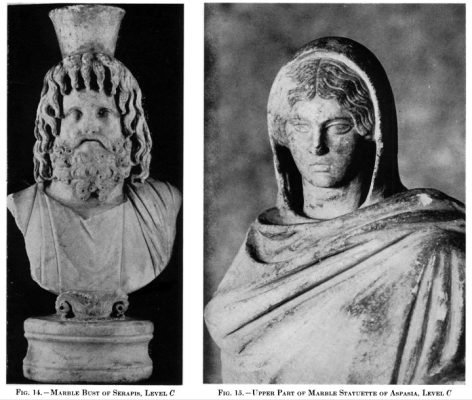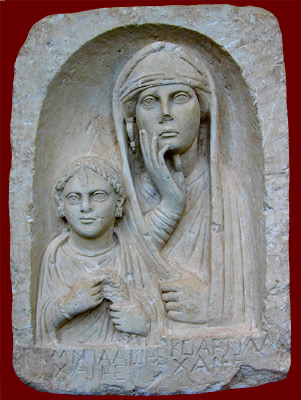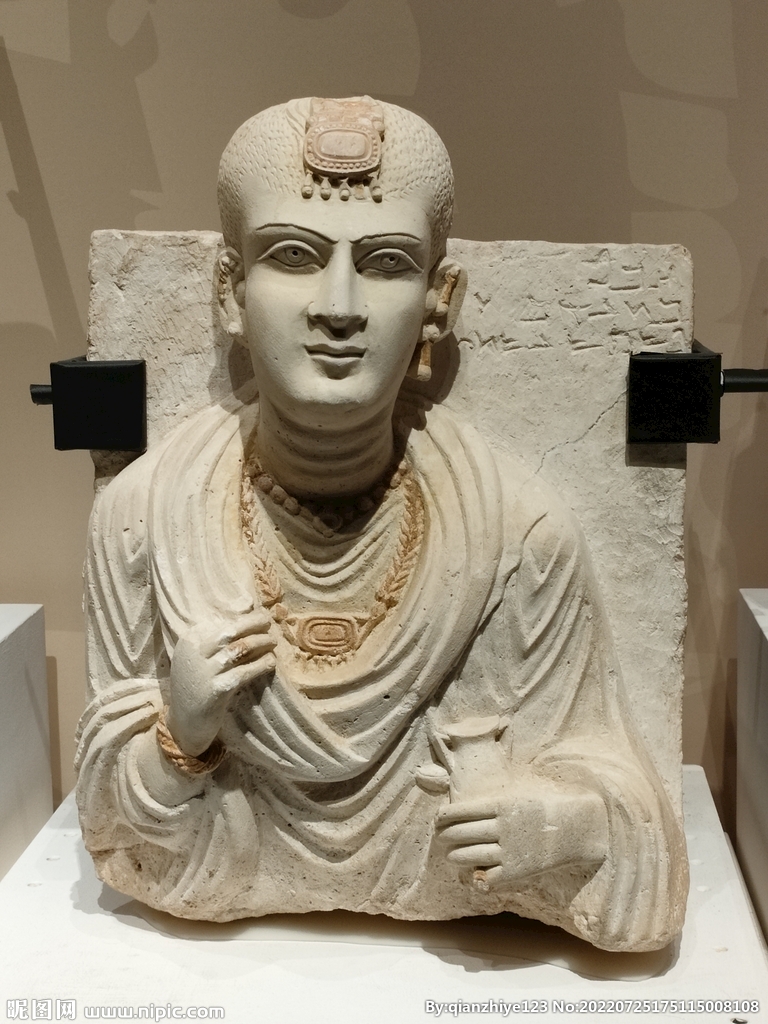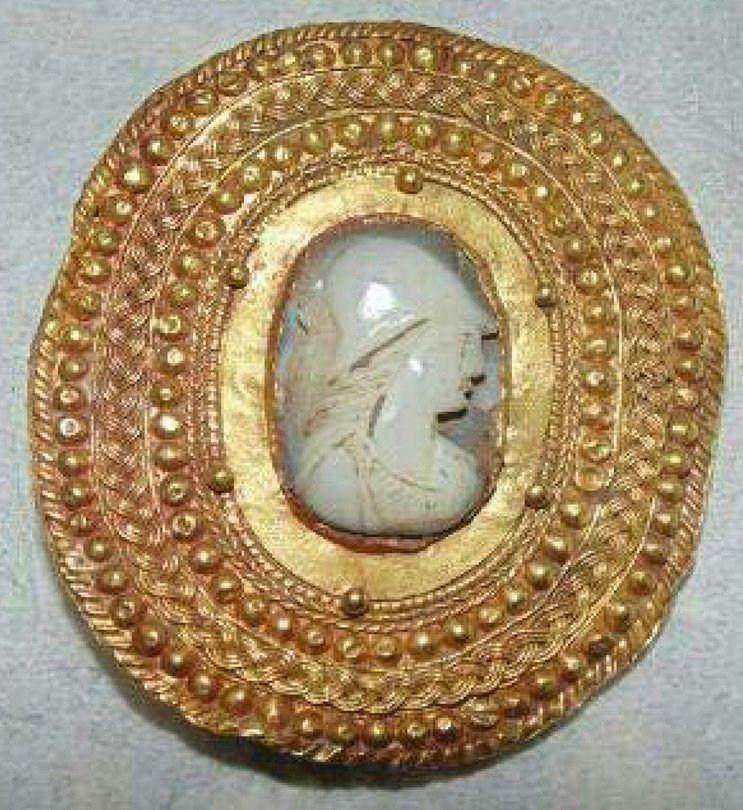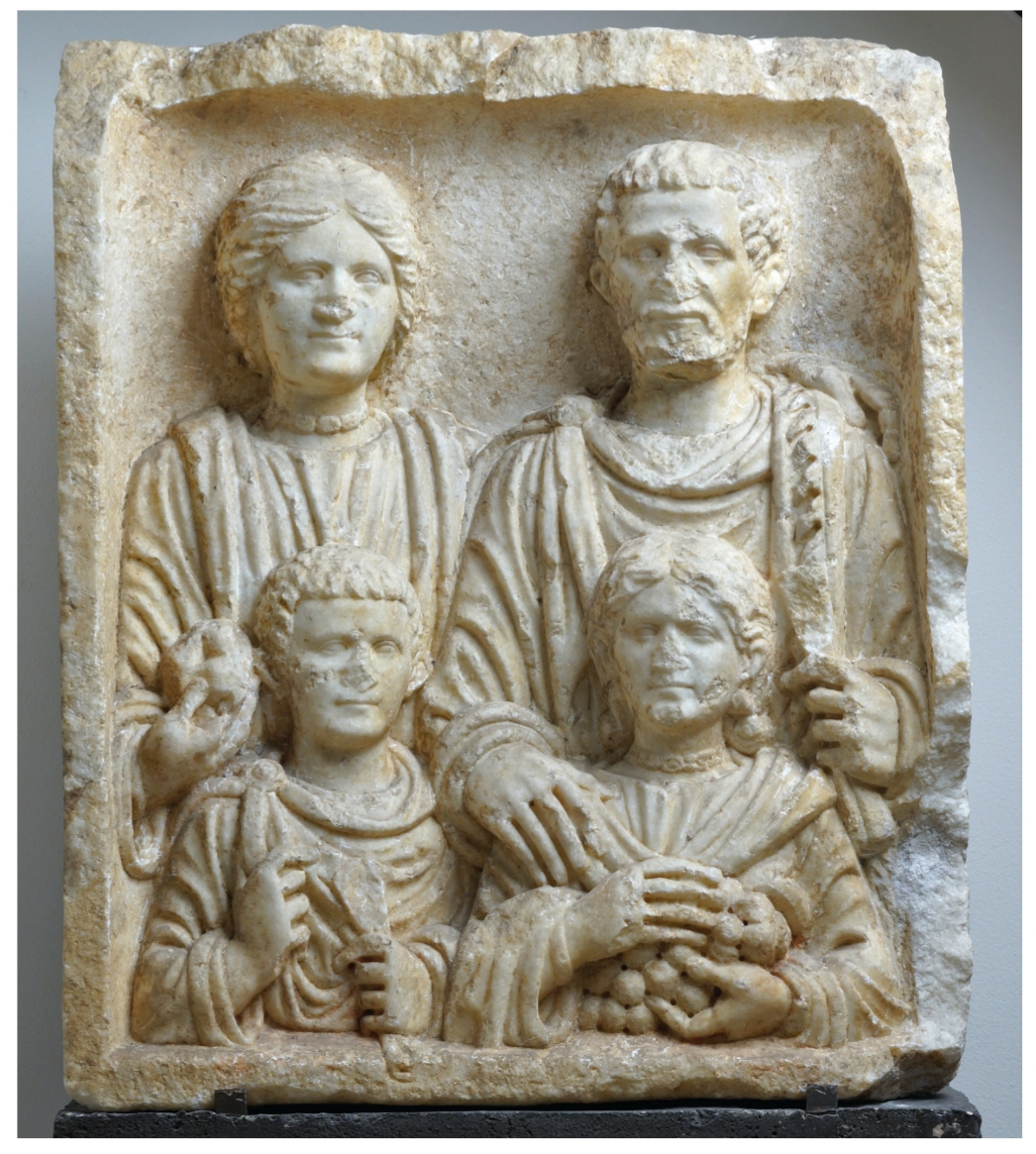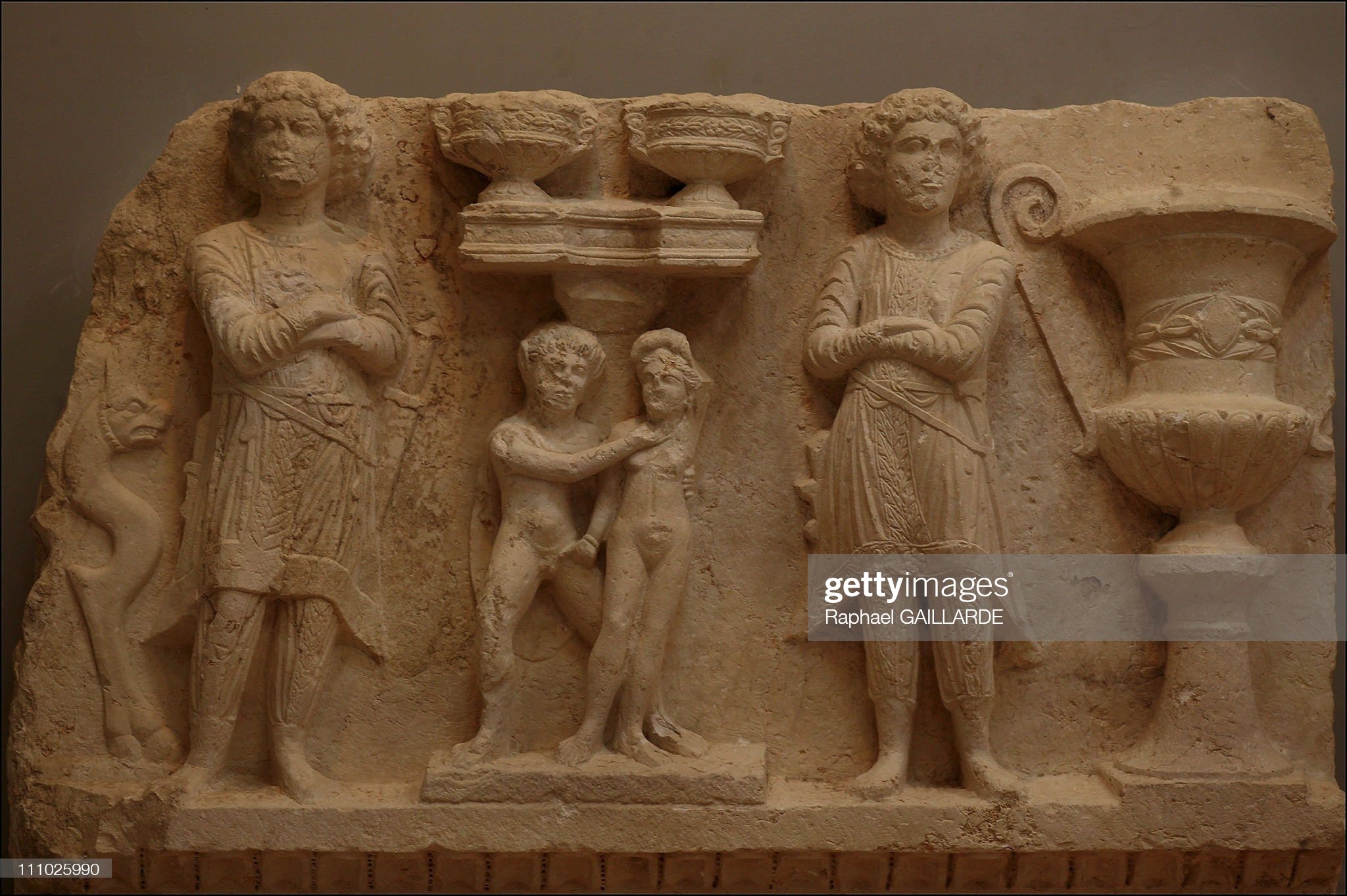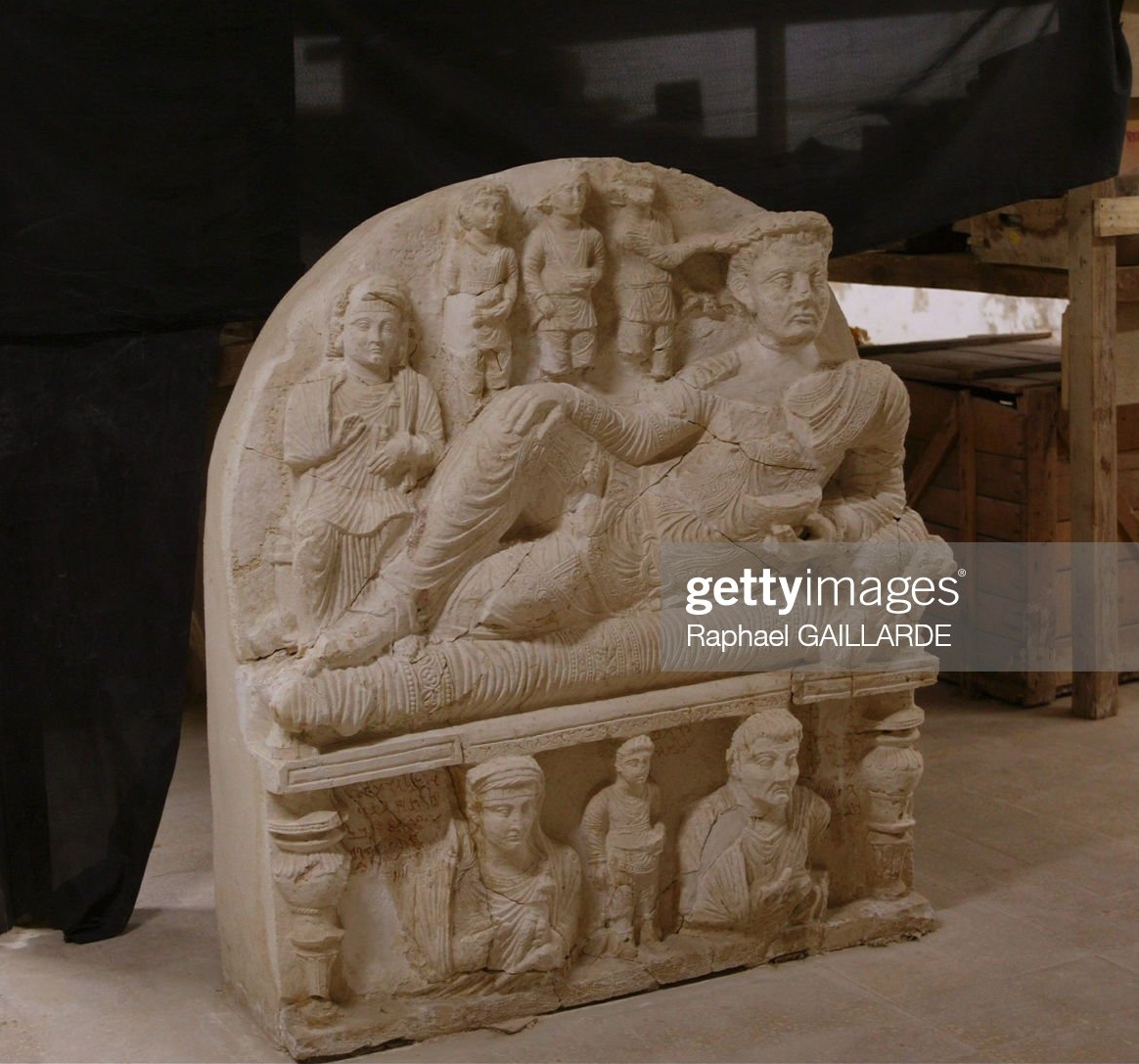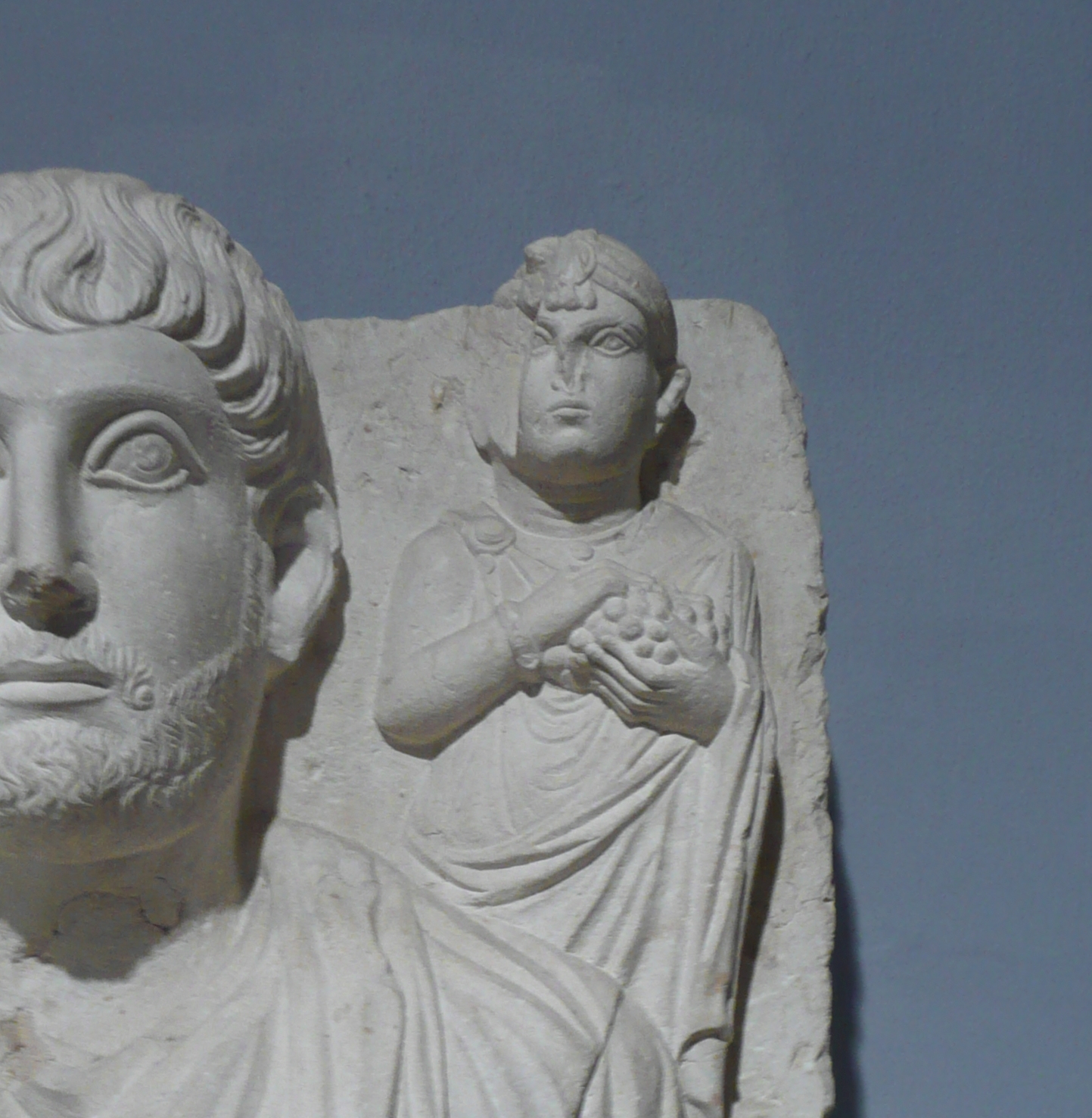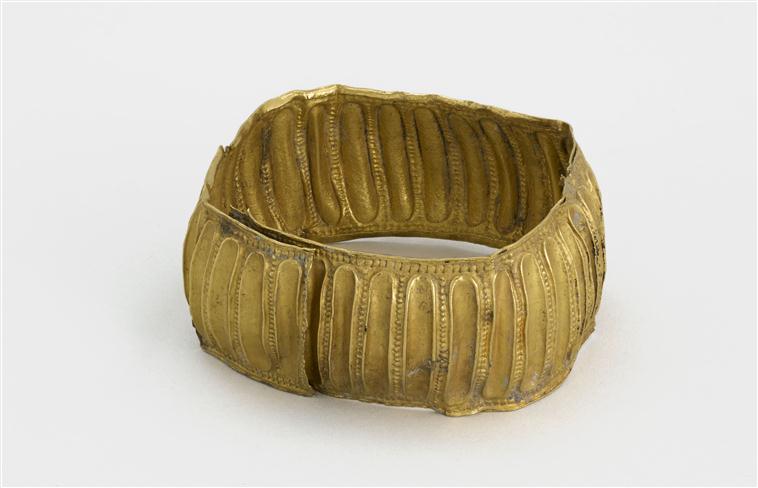Funerary statue of a woman with preserved polychrome, mid 2nd century CE, from a Roman tomb at Hama. Archaeological Museum, Hama.
Discriminalia type hair ornament, the bracelet, earrings, torc. A sash?
Literature: Harald Ingholt, The Danish Excavations at Hama on the Orontes; American Journal of Archaeology, 1942 / 10-12 Vol. 46; Iss. 4; DOI: 10.2307/499079
“Among the finds from Roman time (Hama C) the most exciting was that of two marble busts of Serapis, found buried under an Arabic storage jar, together with a marble statuette like those generally called “Aspasia”, the only known complete example of this type.
In a rock-cut tomb a statue of a goddess occupied the central niche of the back wall. The black color of the hair and the red tinge of the dress give her a peculiarly lifelike appearance. Her costume is Greek-chiton and himation; on the other hand, the unusual coiffure, the elaborate frontal and the two tasselled belt-ends point as decisively towards the Near East.”
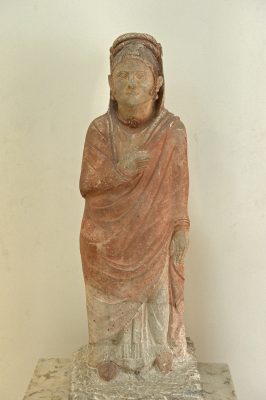
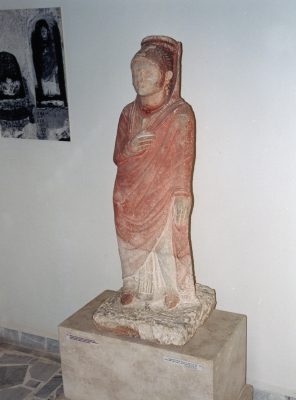
https://commons.wikimedia.org/wiki/File:HAMA_Museo_Archeologico_Statua_funeraria_dipinta_-GAR-_6-05.jpg
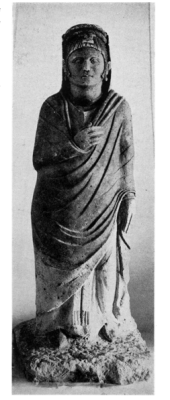
“During the years 1931-38 a Danish archaeological expedition, sponsored by the Carlsberg Foundations of Copenhagen, Denmark, worked in Syria. The site chosen was Hama on the Orontes, the Old Testament Hamath […]
The ancient city site, situated in the northern outskirts of modern Hama, forms a most imposing mound, about 336 m. long, 215 m. wide and 46 m. high. Twelve different levels of civilization were uncovered, ranging in time from the fifth millennium B.C. to about 1400 A.D.” [H. Ingholt]
